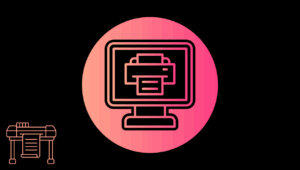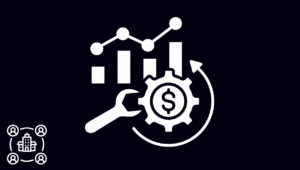Most times, employees are overflowing with energy when they first start a job. But somewhere down the line that energy almost completely disappears, leaving bored or unhappy workers mechanically going through the motions. Such a situation is concerning for any good manager or a business owner. Thankfully, there are several ways to tackle the issues and keep employees on top of their game. In this article, you’ll see four ways to keep employees motivated.
Why Employee Motivation Is Worth Your Focus
Motivated employees don’t just work harder. So, they work smarter. They stay longer, care about the outcome, and contribute beyond their job description. In contrast, demotivated employees do the bare minimum and silently contribute to high turnover costs.
Key benefits of a motivated workforce:
- Increased productivity and innovation
- Lower absenteeism and turnover
- Better team collaboration and morale
- Stronger employer branding
- Higher customer satisfaction
Here’s how to create an environment where motivation thrives. So, regardless of your industry or company size.
Positive leadership to keep employees motivated
Human interaction often requires some kind of management and work relationships are not an exception. Bad leadership is usually a major factor in topic by de-motivating employees. In spite of the reality, most workers don’t like being to feel like just a cog in the wheel. It is necessary for good leaders to genuinely listen to those under them and make them feel important.
Operating in boss mode all the time can lead to alienation on both sides. Employees will be better encourage by a supportive leader who works hand-in-hand with them than one who simply passes down orders. So, use social media to show people you are human and keep your employee motivated.
Improve the working environment
An attractive work environment is in itself a productivity booster. A place where employees spend the most time should feel welcoming and comfortable. Pay attention to all the little details, from lighting to seemingly trivial equipment like fans or water coolers.
Find affordable ways to beautify the workplace with artwork or unique paintwork. The neatness and orderliness of any workspace sends a positive message to both employees and clients. The equal focus should also place on the mental or emotional conditions of the workspace as a toxic work environment leaves employees glancing at their watch every now and then, eager to escape to keep employees motivated.
Acknowledge and reward good work
Nothing makes employees happier than getting recognition and reward for a job well done. Neglecting to appreciate employees that deserve praise can lead to feelings of dissatisfaction in those employees and discouragement for others. Develop a reward program for a wide range of achievements.
While expensive rewards can be limited to when employees surpass expectations, some form of recognition should also be available for workers who excel at little things such as making coffee for colleagues or never missing a day of work.
Introduce fun activities to keep employees motivated
Fun in the workplace doesn’t have to be limited to Christmastime. Organize one enjoyable activity or another at least once a month to help employees unwind. Depending on financial feasibility, it could be a trip to the theatre, a restaurant treat, or employees could just try games on a Friday night after work. What matters is not the activity in itself but the opportunity it provides for building camaraderie among the workers.
Keeping workers motivated is a priority for any working organization aiming for success. A motivated workforce can take the company to the highest levels and easily turn things around during periods of crisis. Ultimately, the key to motivating employees is to communicate with them constantly to find out what can be to keep each worker functioning at full capacity.
Align Incentives with What People Actually Value
Not all rewards motivate equally. Some people thrive on public recognition, others value time off or financial bonuses. The mistake many companies make? Assuming everyone wants the same thing.
Incentives that often outperform cash:
- Extra time off or mental health days
- Surprise care packages or personalized gifts
- Tickets to events or experiences
- Learning stipends
- Charitable donations in their name
Survey your team. Give options. And most importantly, make rewards feel earned, not just distributed.
Improve the Day-to-Day Work Environment
People spend most of their time in the “middle” of the work experience. So, the regular, often overlooked stuff like how meetings are run, how emails are answered, or how decisions are made. Clean up those environments to reduce friction and energize employees.
Key areas to optimize:
- Limit unnecessary meetings and create meeting-free zones
- Streamline tools (too many platforms = mental fatigue)
- Clarify decision rights: Who decides, who’s consulted, who’s informed
- Improve onboarding so new hires feel confident quickly
Motivation drops when employees waste energy on things that shouldn’t be hard.
Summary Table to keep employees Motivated: Motivation Tactics That Drive Results
| Strategy | Outcome | Best For |
|---|---|---|
| Purpose over tasks | Increases meaning and clarity | All teams |
| Recognition tied to impact | Reinforces positive behavior | High-performing individuals |
| Personalized growth paths | Retains top talent | Ambitious or restless employees |
| Autonomy in execution | Fuels ownership and innovation | Creative or strategic roles |
| Psychological safety | Encourages risk-taking and problem-solving | Teams under pressure |
| Flexible incentives | Keeps rewards relevant | Diverse workforce |
| Operational improvements | Reduces burnout and friction | Fast-moving teams |
| Peer relationship building | Enhances loyalty and well-being | Hybrid/remote teams |
| Continuous feedback | Boosts momentum and accountability | Growing professionals |
| Actively using employee input | Builds trust and long-term engagement | All team sizes and cultures |
Final Word: Motivation Is Built, Not Bought
If your team seems flat, distracted, or disengaged; So, it’s rarely about laziness. More often, it’s about clarity, trust, autonomy, or feedback gaps. Motivation isn’t a switch to flip; it’s a system to build.
Start with one area from the list above and go deep. Ask your team what energizes them. Treat motivation as part of your business strategy, not just an HR initiative and you’ll get a workforce that shows up fully, consistently, and with purpose. That’s where real momentum begins.








